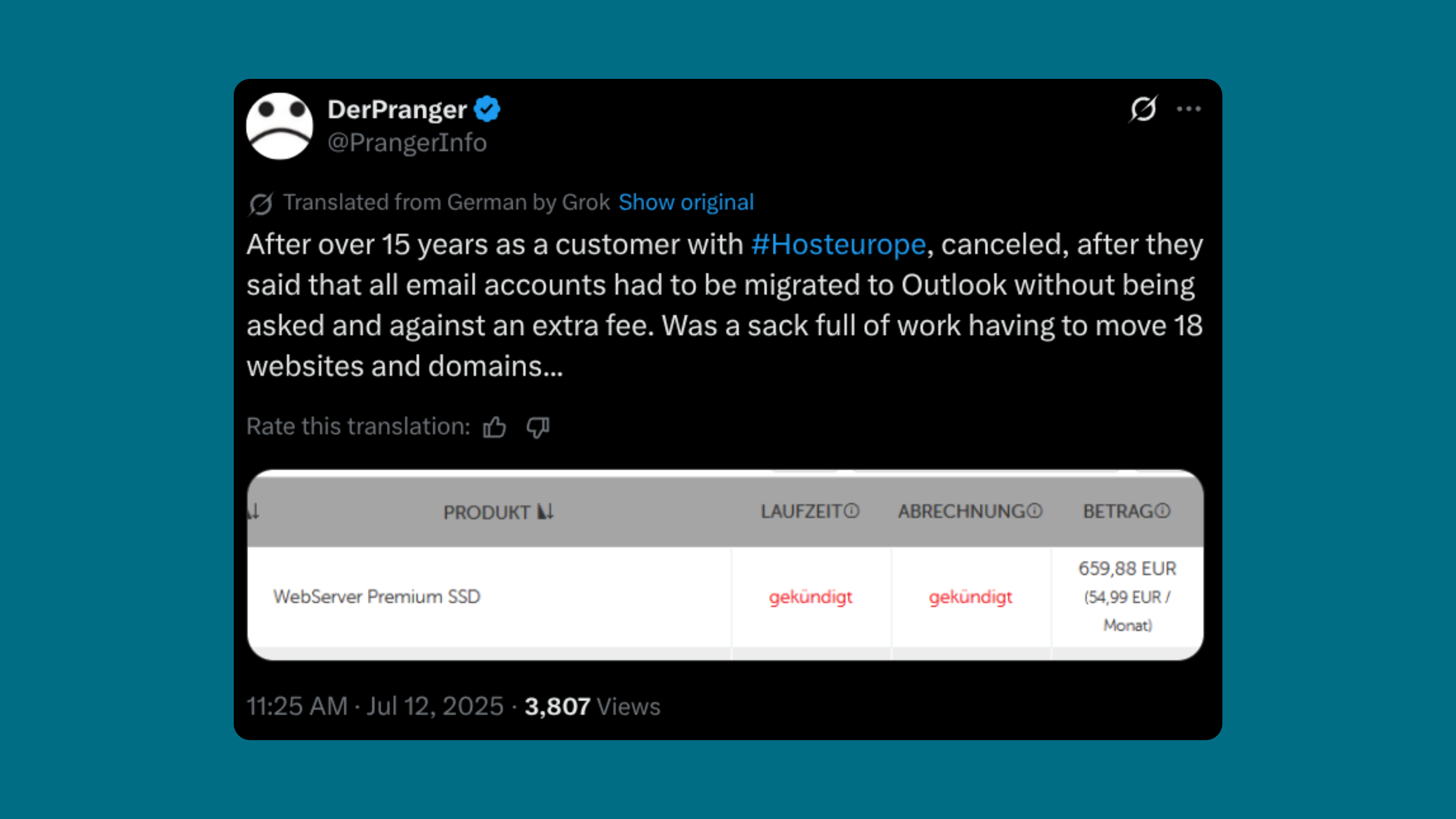How GoDaddy hollowed out Host Europe & DomainFactory (plus better European web hoster providers)
Have two of the best European web hosting companies become an example of "enshittification" on the internet?
For many in Germany’s digital community, Host Europe and DomainFactory once were some of the best web hosters as they stood for reliability, innovation, solid local hosting, and excellent support. Host Europe, based in Cologne, and DomainFactory, based in Munich, built their reputation in the 2000s as quality web hosters with fair pricing and flexible options. But after years of GoDaddy bleeding out loyal customers, they are now quitting by the hundreds. This comes as no surprise as GoDaddy is forcibly migrating users’ mail accounts to Microsoft 365. Many disagree with this move that first, is not a good choice in terms of data protection, and second costs extra money.
People online are saying that the story of these two web hosters is like a textbook example of “enshittification”, also known as platform decay. While Host Europe and DomainFactory used to be very popular services in Germany and beyond, this changed for many users after the acquisition by GoDaddy. The US hoster that is known for offering custom domains at a cheap price, acquired a huge chunk of the European market with this take over.
However, users are increasingly unhappy and turning their back on Host Europe and DomainFactory. This trend accelerated in 2025 as GoDaddy pushed its users’ email accounts onto the Microsoft 365 cloud – with added costs.
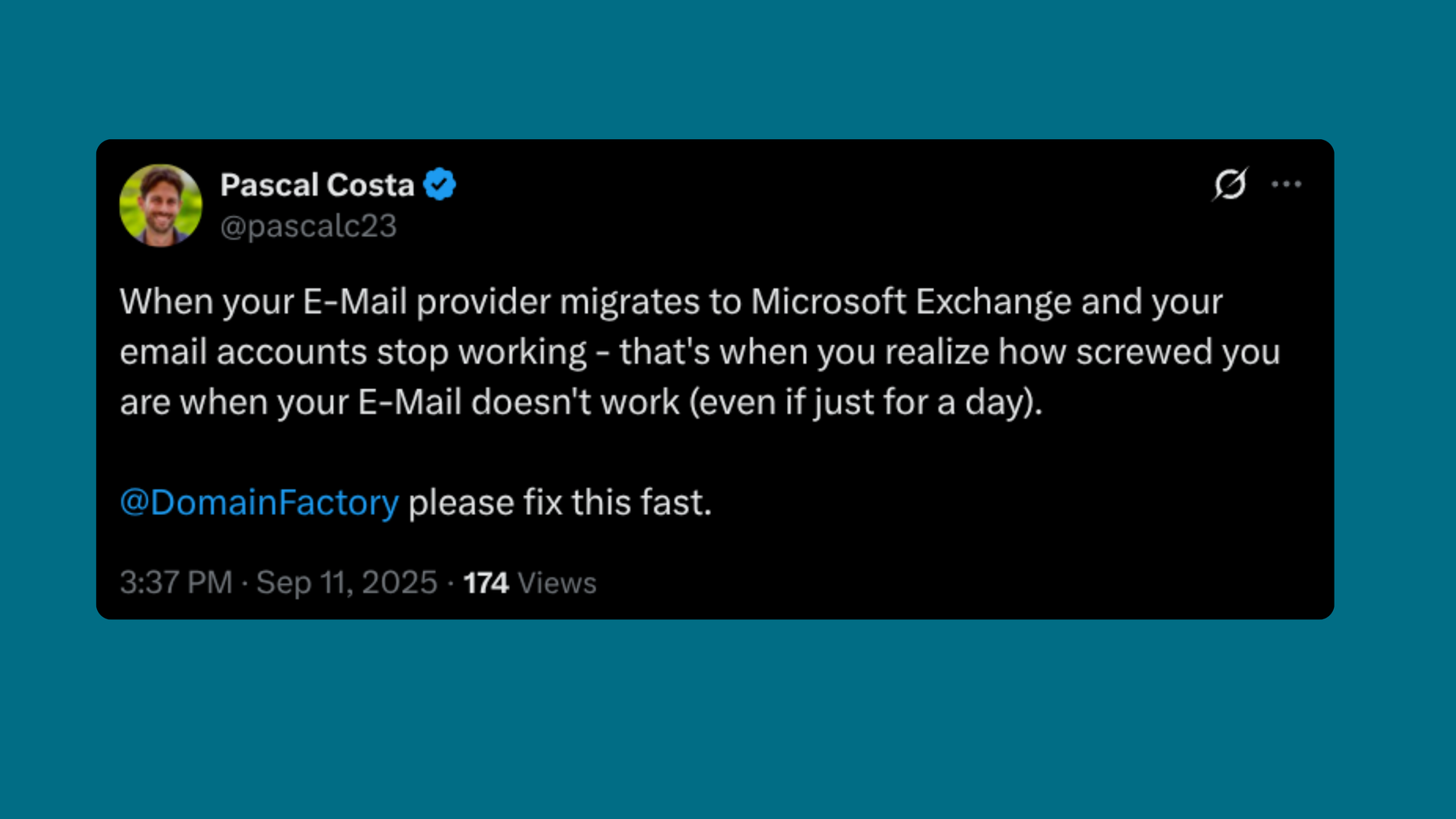

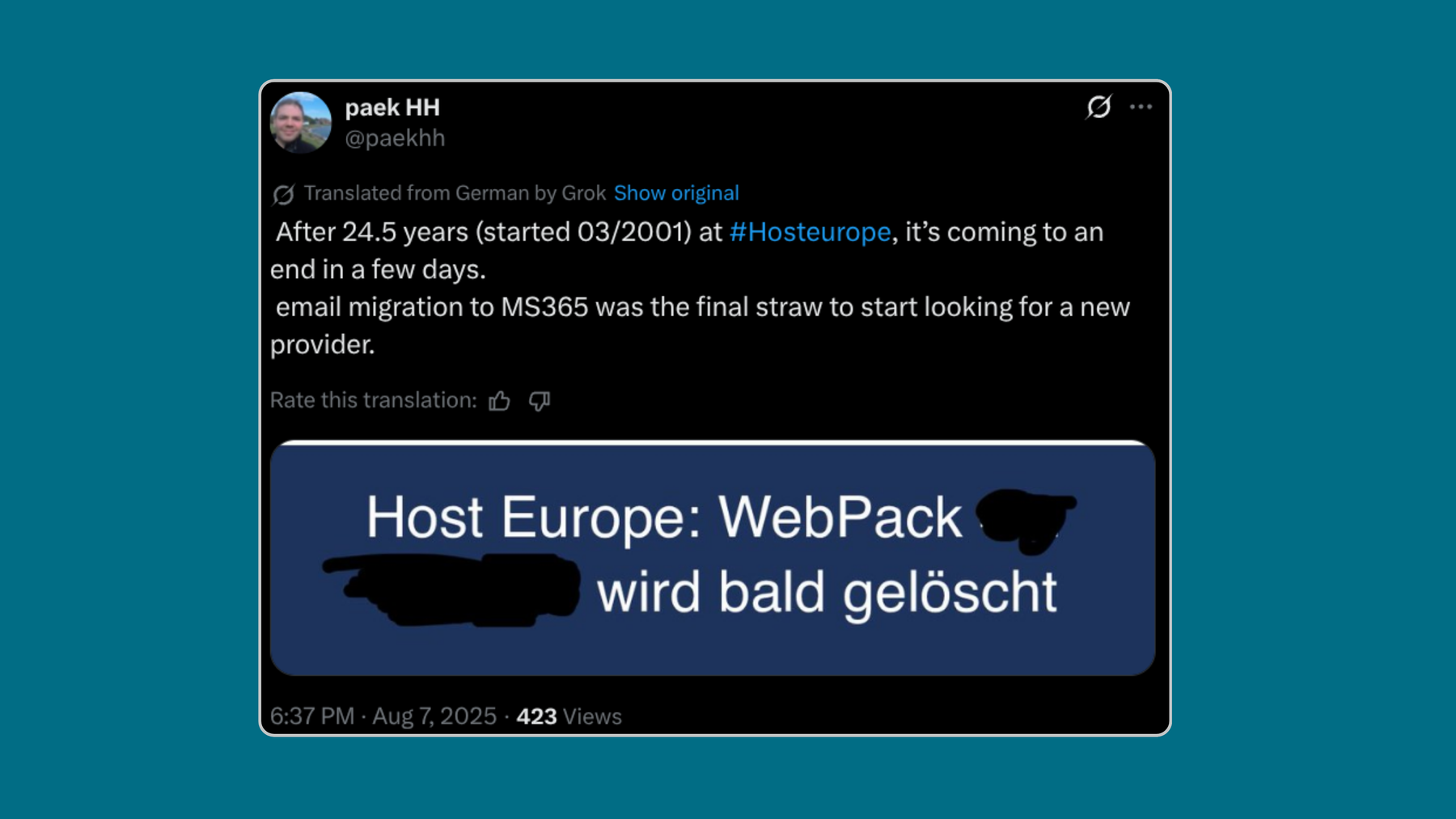

Price hike
Customers of Host Europe and DomainFactory are furious about the company’s unasked for decision to migrate all their email accounts to Microsoft 365. With this change – that users had no option to object to other than remove their email accounts from Host Europe or DomainFactory – the companies also added extra fees for something that used to be included in hosting packages. Many had chosen Host Europe precisely because its hosting packages came with a large number of email accounts included, which they used for families, small businesses, or entire organizations. Now, these same customers are suddenly confronted with potentially steep monthly costs, depending on how many email accounts are in use.
Turning local services into Big Tech
Users today complain that it looks like their local services have been turned into a part of Big Tech: Once-beloved services, after being acquired by large corporations, are getting squeezed until the user experience collapses under the weight of cost-cutting and profit extraction.
The story of Host Europe and DomainFactory follow a similar pattern. First the companies were bought, and product quality slowly declined over time. Features were no longer included in standard plans, and users were moved to new plans with fewer features. So while the quality went down, prices went up: SSL certificates? Now a costly add-on. Domains? No longer bundled, but billed on top. Email accounts? Migrated to MS 365 with extra fees.
In the beginning, most users accepted these changes because migrating ones domains is quite some effort. But the final straw for many was the recent migration of email account to Microsoft 365.
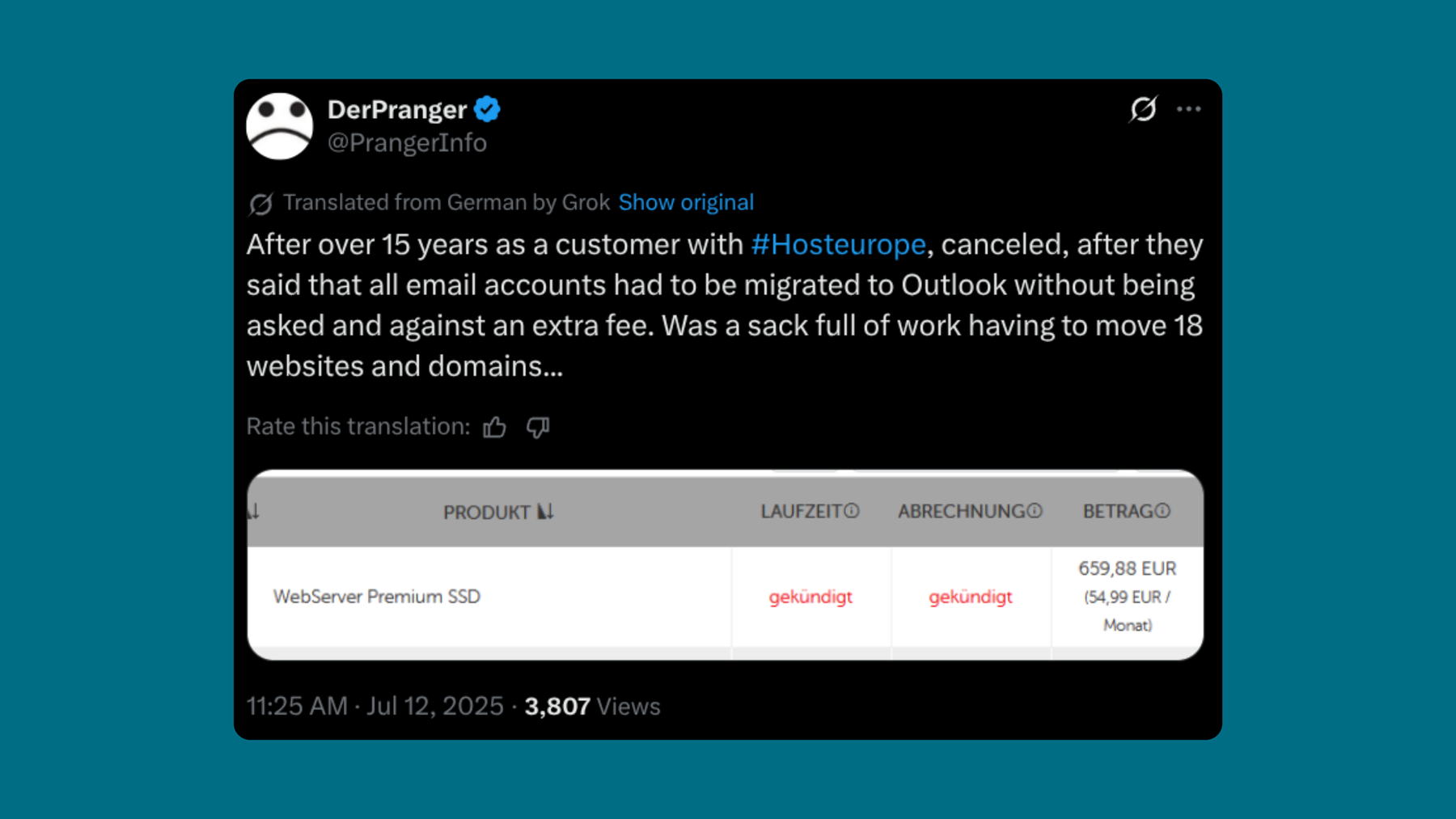

Looking for alternatives
Understandably, users do not want to be forced into Microsoft’s ecosystem – let alone at extra costs. This is not only because Microsoft is being criticized for its security, or for its “sovereign washing”, it’s simply because it doesn’t feel right: If as a user, you choose a local service, you do not want to fall victim to Big Tech’s profit maximization tactics. And Microsoft, for example with its recent announcement to no longer offer its tools for free to non-profits, is using these tactics.
As a result, previously loyal customers are now walking away and looking for new web hosting providers after years of tolerance.
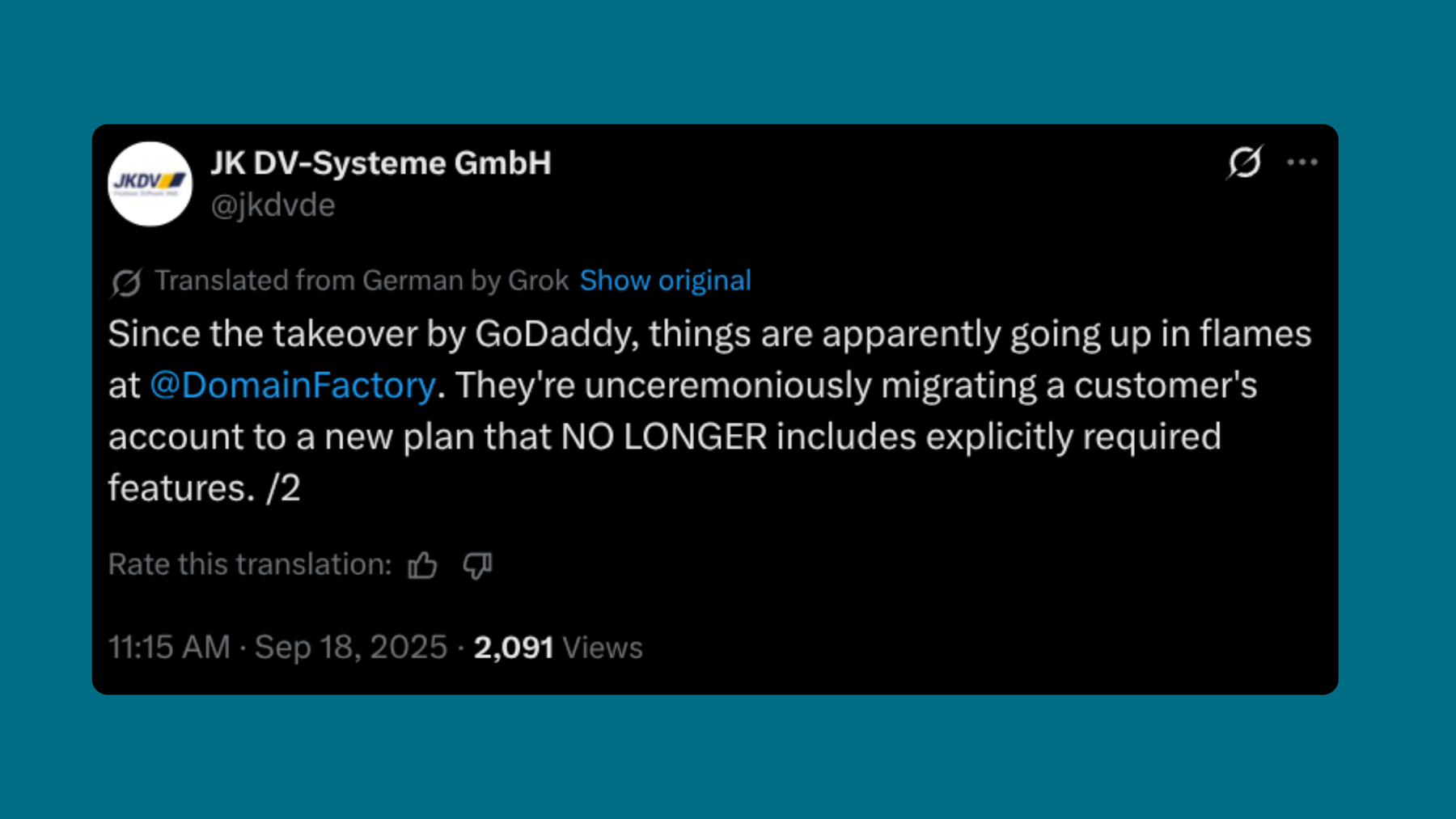

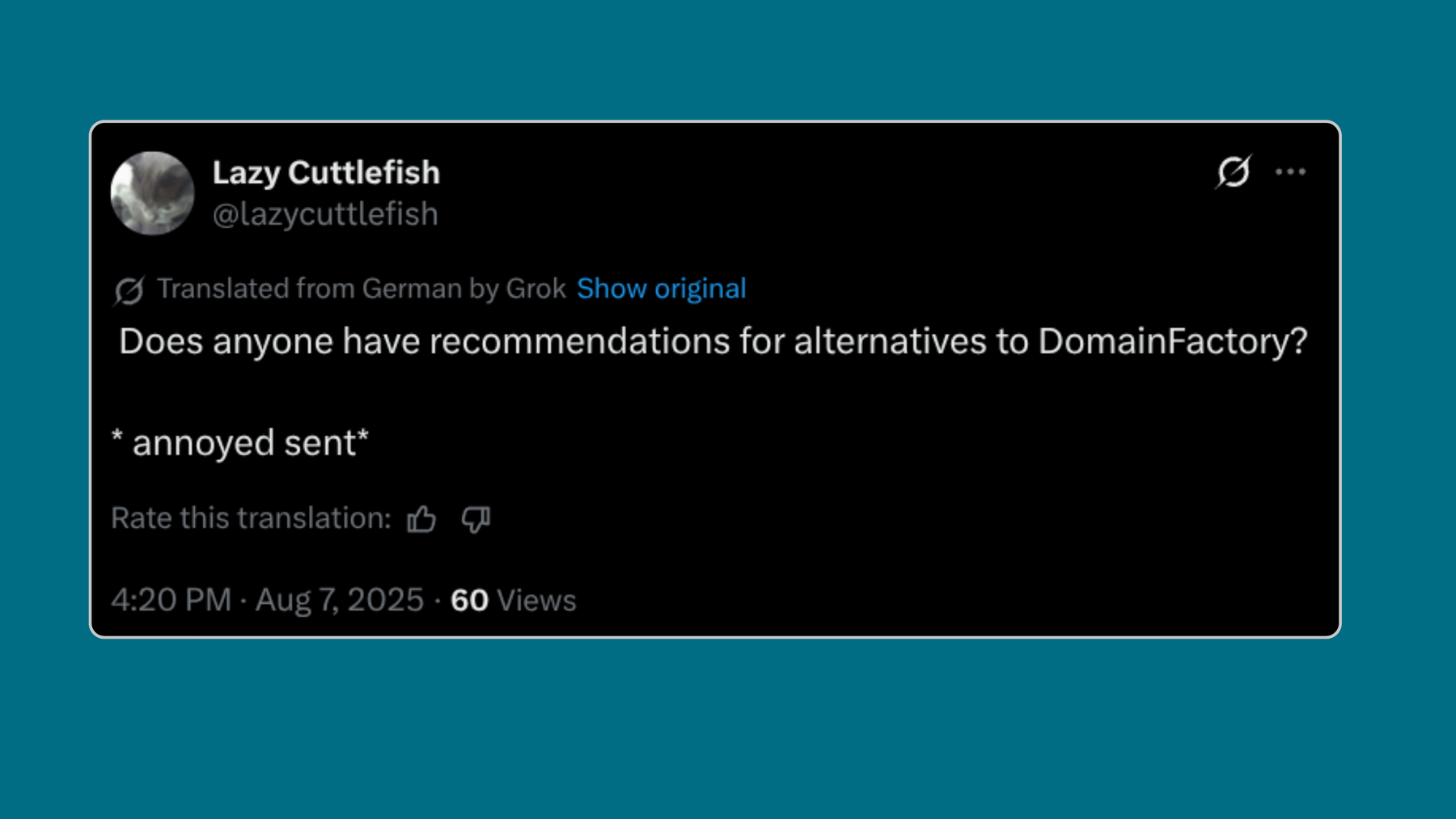

European web hosting providers
The good news is that you don’t have to stay when the quality of any service is going down. There are always options. Europe still has plenty of independent and user-focused hosting providers that offer transparent services.
Here are some solid European web hoster alternatives.
For most hosting services, the low price advertized is only valid for the first year – so we’d recommend checking the prices for your chosen package very carefully.
Hostinger: A global player, based in Latvia, is known for low-cost hosting with data centers worldwide. It provides unlimited SSL certificates, WordPress-friendly packages, and 24/7 support. The service starts at €2.99/month (only in the first year) so the real price for the cheapest Hostinger package is €9.99/month.
Strato: One of Germany’s largest hosts, offering everything from simple domains to dedicated servers. Features include homepage builders, WordPress hosting, webshops, and flexible upgrades. Entry-level hosting starts at €1/month in the first year, and then goes up to €9/month, making it suitable for both beginners and professionals.
Ionos: Germany’s biggest hosting brand offers scalable webhosting with performance monitoring and options like ASP.NET and VPS hosting. Daily backups are standard, and prices start at €1/month (introductory) before rising to €12/month for the recommended “Plus” plan.
Jimdo: This is a website builder service rather than classic hosting, ideal for freelancers, artists, and small shops. It offers ready-made legal texts (e.g., for GDPR compliance), mobile-optimized designs, and integrated online shop options. Plans start free with a jimdosite subdomain, while full-featured packages (with domain and legal guarantee) cost from €11–45/month.
Dogado: Dogado is a German eco-friendly web hoster (100% renewable energy) with 24/7 support. It offers SSD-based hosting packages with generous domains and email features, targeting small- and medium-sized businesses. Prices start at €5.99/month, with scalable plans up to €27.99/month.
Mittwald: Mittwald has shifted from classic webhosting to modern cloud hosting, where prices start at €10/month and flexibly increase based on monthly visitor numbers instead of raw storage. It’s highly scalable, includes unlimited email accounts and databases, SSL certificates, and strong backup features. With servers in Germany, it’s a good choice for businesses needing flexibility and GDPR compliance.
Email alternative
For email, instead of being pushed into Microsoft 365, you can also choose a provider that actually protects your data. Take a look at Tuta Mail, a German email service that offers end-to-end encryption, GDPR compliance, and has zero ties to Big Tech.
Step-by-step guide: How to migrate
Now that you’ve looked at the European alternatives to Host Europe and DomainFactory, you can follow this step-by-step guide to migrate your domains and break free from GoDaddy-owned providers.
Make a list
- List all domains, websites, databases, and email accounts you currently have.
- Note which ones are active, and which are not in use anymore.
- Decide which ones to cancel and which ones to migrate.
Choose your new hosting provider
- Compare plans from Hostinger, Strato, Ionos, Jimdo, dogado, Mittwald and others to see which plan best suits your needs.
- Decide whether you want shared hosting, a managed server, or a VPS.
- Make sure the package includes the domains and webspace you need.
Register or transfer your domain
- If your domain is still with Host Europe or DomainFactory, request an Auth-Code (authorization code).
- Initiate the transfer at your new host.
- Domain transfers usually take 1–5 days.
- Important: Don’t cancel your old hosting before your new setup is fully activated.
Migrate your website(s)
- Use tools like All-in-One WP Migration (for WordPress) or manually copy files and databases.
- Upload them to your new hosting provider.
- Test your site using a staging URL before pointing the domain to the new server.
Migrate email to Tuta Mail
Instead of accepting forced migration to Microsoft 365, move to Tuta Mail:
- Create a Tuta Mail business or private account. Compare the prices here.
- Add your custom domain in Tuta’s admin settings.
- Verify domain ownership (DNS TXT record provided by Tuta).
- Set new MX records in your domain DNS to point to Tuta Mail.
- Create the same email address you had before, and optionally activate catch-all. With your own domain, you can create an unlimited number of email alias addresses.
- Use the import feature in the Tuta desktop clients to transfer old emails from Host Europe or DomainFactory.
Once the DNS changes have propagated (which can take up to 24h), new emails will arrive directly in your encrypted Tuta mailbox.
Test everything
- Send and receive test emails.
- Check website performance and SSL certificates.
- Make sure redirects, subdomains, and databases are working.
Cancel old hosting
- Once all data is migrated and running smoothly, cancel your old Host Europe or DomainFactory contracts.
- Double-check invoices to ensure no automatic renewals are triggered.
Don’t wait until “enshittification” happens
The story of Host Europe and DomainFactory, and how the quality of these services declined after being acquired by GoDaddy should be a reminder to everyone that normally the process of “enshittification” doesn’t happen overnight. It’s a slow process of degraded quality, creeping costs, and reduced attention to customer feedback. Until one day, you realize the service you once loved has changed into something completely different.
But whatever happens, you always have a choice. By moving your hosting to a European provider and your email to Tuta Mail, you take back control and stop feeding American Big Tech. Moving domains is an effort, but the result is well worth it!

